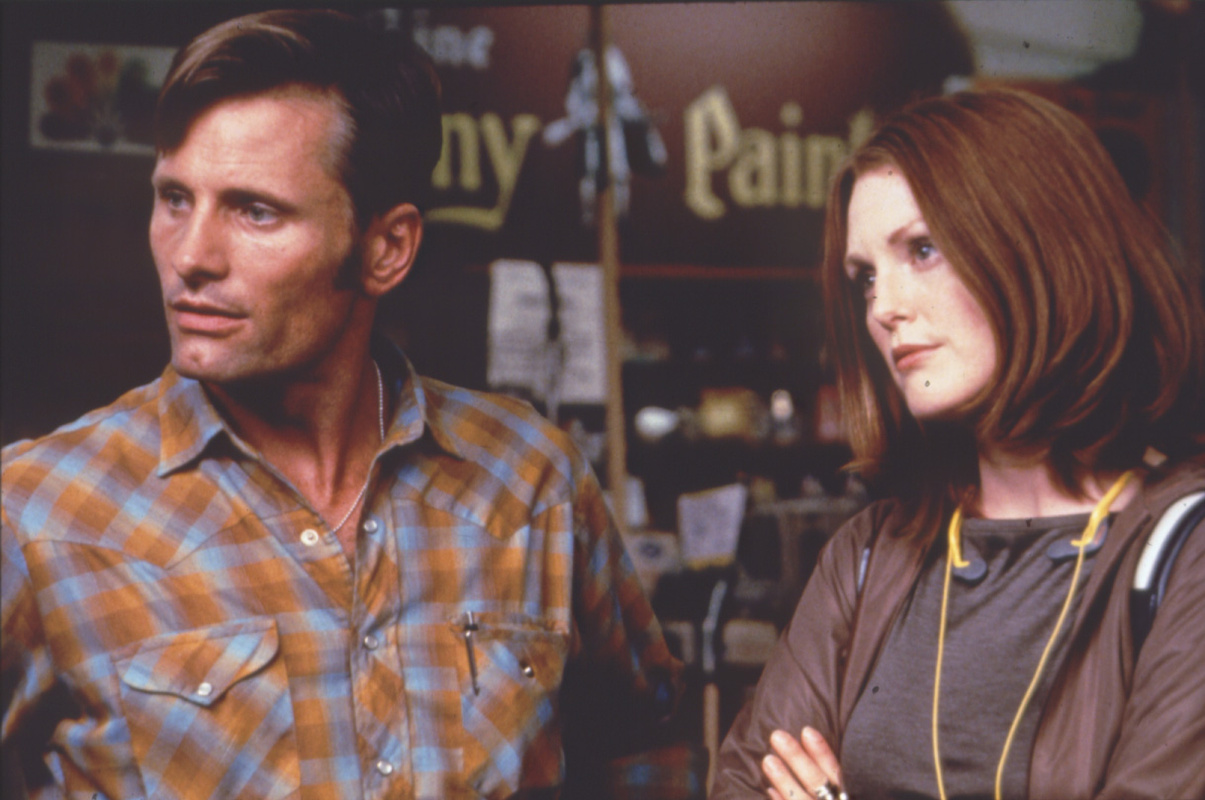“Psycho is perfect to refashion as a modern piece. Reflections are a major theme in the original, with mirrors everywhere, characters who reflect each other. This version holds up a mirror to the original film: it’s sort of its schizophrenic twin.” (Gus Van Sant)
It is perhaps wise to simply erase all memories of Van Sant’s interviews, explanations, intentions and ideas about his 1998 remake of Alfred Hitchcock’s Psycho. Perhaps one is tempted to do the same with the remake itself, a critical and financial flop that baffled and angered many critics and viewers, not merely because an artist was remaking one of film history’s most beloved works, but because Van Sant did not so much remake the film as he did reshoot it, virtually shot for shot, line for line, in a self-proclaimed desire to retell the story for younger audiences. The logic behind these intentions–and the ways in which Universal marketed the film as aiming for a platonic, but infallibly impossible level of fidelity–seem counterintuitive and misguided, given that Hitchcock’s Psycho remains embedded so deeply in Western culture’s psyche, as to render the necessity or usefulness of an exact remake obsolete.
Van Sant’s Psycho retains so much of the original that it can be a challenge to find more minor alterations. There are a few noticeable differences, particularly the script, which mostly reflects Van Sant’s narrative modernization in the 1990s. The film is not only in color, but vividly so; Anne Heche’s Marion Crane sports tacky orange, pink and green-colored outfits, nail polish and brassieres as if she recently escaped the repressed hysteria of Pleasantville. The film’s MacGuffin, $40,000 in cash, is now $400,000. The psychologist’s ending speech removes all the (outdated) references to Norman Bates being a transvestite. There are also two significant additions in Van Sant’s version, which reflect our contemporary comfort with onscreen sexuality. These include an additional, extended shot of Norman Bates after the point-of-view shot through the wall-hole, during which he can be heard masturbating, and another of Sam’s bare ass (followed by a reverse shot of Marion looking approvingly in its direction).
Modernizing Psycho ’98 reveals just how poorly the story translates into a 1990s setting. Marion’s love affair with Sam–premarital and illicit in the 1950s–is the inception of her continued bout of aberrant behavior, what changes her bra from white to black, what lures her into the trap of a twisted individual. Deviancy seals her fate; it’s part of the narrative’s thematic essence. To screw a lover in a cheap motel during lunch break in the 1990s is what jaded adult characters do now in films about mid-life crises, and it doesn’t typically propel them into a downward spiral of immorality or horror-film doom. But its wonky translation also shed light into how Psycho ’60 might also have been more problematic than we once thought. Outside of Freudian analysis, why should a morality play that alludes to illicit sex lead to something as horrific of a demise as Marion’s murder and then become so popular as to turn into a sub-genre itself (slasher films)?
Few people are willing to openly reconsider Psycho ‘60 in relation to Psycho ‘98, which is a bit of a shame. But once you see Psycho ‘98, it’s also kind of impossible not to. The film was an experiment unparalleled in film history, proving to Roger Ebert that a shot-for-shot remake is “pointless” and that “genius apparently resides between or beneath the shots, or in chemistry that cannot be timed or counted.” Film critic and Hitchcock expert William Rothman went so far as saying “the more I dwell on van Sant’s Psycho, the more it can seem that cinema … has run its course, that the art of film is declaring bankruptcy.” Everything, including direction, the previously described changes, and performances were scrutinized mercilessly; there was no way in hell Anne Heche or Vince Vaughn, especially, could ever live up to the performances of Janet Leigh or Anthony Perkins. The film was doomed before anybody watched it; it was a spectacular failure by simply existing.
The perceived failure of Psycho ‘98 in critical circles is beautiful in a way, however, like a scientific experiment yielding unexpected results. The film instigated new ideas about cinema, artistic re-appropriation, and the allegedly untouchable status of canonized classics. Psycho‘98 provoked not only a new appreciation for intertextuality but proved that a film, or any given art work, can only be really understood by acknowledging the greater context surrounding it. Psycho ‘98 spurred some of the healthiest, most productive, and after 40-odd years, noveldiscourse about a film that has been written about to death. The simplistic knee-jerk reaction from most critics proved a disappointing intellectual ceiling in film criticism, erstwhile sparking immensely stimulating discussions in academia.
The film’s few advocates for the remake argued carefully but earnestly for its redemption, with one of the most compelling arguments coming from Steven Jay Schneider in Senses of Cinema and later elaborated upon by Shannon Donaldson-McHugh and Don Moore by way of The Journal of Popular Culture, which posits that Psycho ‘98 provokes a re-examination of the heteronormative and phallocentric nature of Psycho‘60. The scene that clinches their argument is Norman’s peeping through the wall eyehole to watch the scantily-clad (or in Van Sant’s version, naked) Marion. Hitchcock’s framing of this scene, which includes two shots from Norman’s point of view, unwillingly forces the viewer into Norman’s perspective and a heteronormative, phallocentric gaze, a position that is made not only uncomfortable but horrific to the viewer later in the film when Norman’s psychosexual aberrancy is discovered (by being invited to see the film only from a heteronormative position, it becomes less possible to probe or understand Norman’s psychotic sexual urges). In Van Sant’s version, there is a prolonged shot, as described earlier, wherein the viewer is allowed to look at Norman as well, which breaks the flow from a purely phallocentric gaze. The viewer is still interpellated into seeing Marion as a sexualized object, but it’s in addition to viewing Norman as a sexualized object, which allows a greater range of positions from which to consider Norman’s sexual behaviour. By confirming that Marion’s naked body did, indeed, arouse Norman, Psycho ‘98 also suggests that Norman’s sexuality is not necessarily or simply repressed, homosexual, or asexual, but that he is indeed possible of unisexuality. This is important because it underscores the repressed homophobic nature of Psycho ’60 by comparison, by way of the insertion of a small, seemingly random and much-despised shot of Vince Vaughn masturbating.
Psycho 98 will likely never be critically loved, but it is also too easy to loathe, especially considering what it opened up in the field of film criticism. If aesthetic criticism is to remain a fluid, open-ended and creative endeavor for people interested in reading films in new ways, Psycho 98 proved to be ultimately a good thing. It uprooted long-held assumptions about a classic work that seemed unassailable to new critical thought.

